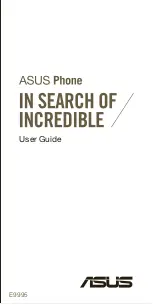
FF2: Trunk Programming (T1 CO)
Section 400-Programming
Page 2-100
●
DBS 576 (USA) issued 05/20/98
576-13-400
FF1
System
FF2
Trunks
FF3
Extensions
FF4
FF-/Soft Keys
FF5
Groups
FF6
TRS/ARS
0
System
Configuration
FF7
Applications
FF8
Maintenance
Introduction
Appendix A
Appendix B
FF1
System
FF2
Trunks
FF3
Extensions
FF4
FF-/Soft Keys
FF5
Groups
FF6
TRS/ARS
0
System
Configuration
FF7
Applications
FF8
Maintenance
Introduction
Appendix A
Appendix B
Notes:
Set to “1” (Send) if the CO doesn’t support dial tone (typical in U.K.).
Related Programming:
Trunk Signal Type (pg. 2-87) FF2 2 BSSCC 02 00 Hold (0-3) Hold
Notes:
Related Programming:
SMDR Data to Serial Port (pg. 1-88) FF1 0 06 0001 Hold (0-2) Hold
SMDR Output Format (pg. 1-93) FF1 0 09 0001 Hold (0-2) Hold
CO Dial Tone Simulation
(all CPCs) - Version 1.0 or higher
Set whether the system will send a simulated CO dial tone to an extension
using this T1 channel (important for DID Wink-Start trunk signaling).
FF2 2 BSSCC 03 06 Hold (0 or 1) Hold
r
0=Do not send simulated CO dial tone
BSSCC: T1 (CO) Channel Position
B=Cabinet no. 1-6
SS=Slot no. 01-12
CC=Channel no. 01-24
to extension. (default)
1=Send simulated CO dial tone to extension.
$
# %
SMDR for Outbound Calls
(all CPCs) - Version 1.0 or higher
Set whether outbound calls on the T1 channel will be included in SMDR records.
FF2 2 BSSCC 03 07 Hold (0 or 1) Hold
0=Do not include in SMDR.
BSSCC: T1 (CO) Channel Position
B=Cabinet no. 1-6
SS=Slot no. 01-12
CC=Channel no. 01-24
1=Include in SMDR. (default)
$%
2 #-6-0#-
















































